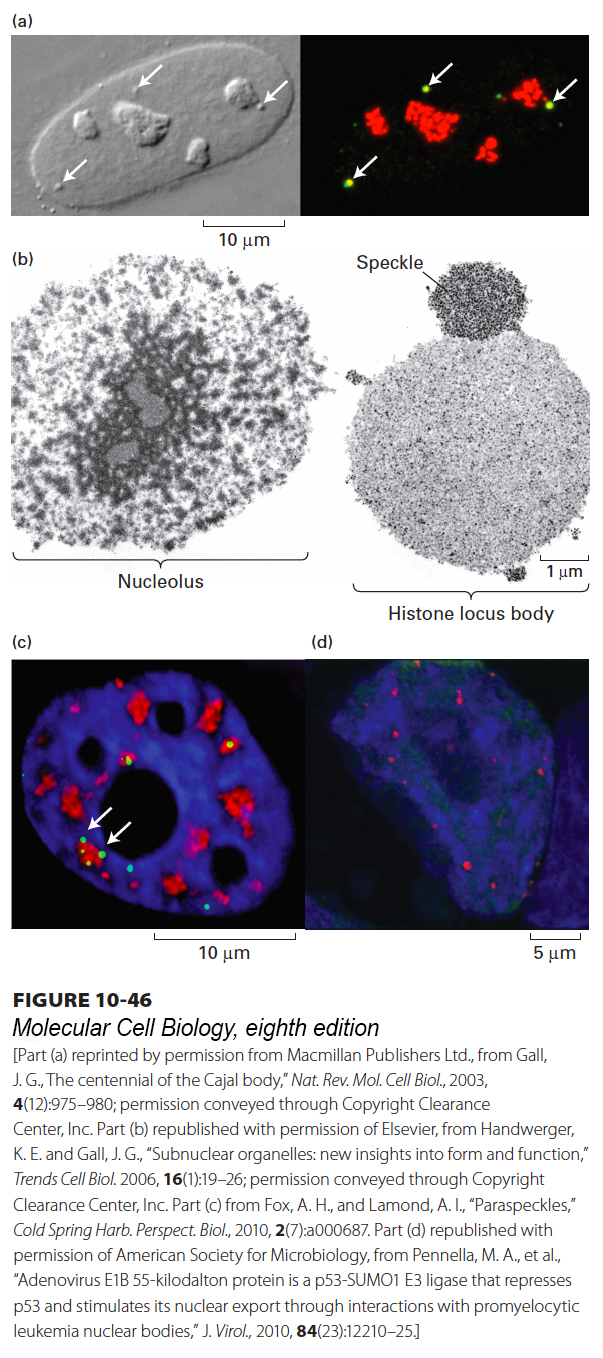
FIGURE 10-
[Part (a) reprinted by permission from Macmillan Publishers Ltd., from Gall, J. G., “The centennial of the Cajal body,” Nat. Rev. Mol. Cell Biol., 2003, 4(12):975– 9– 5- 3- 0–